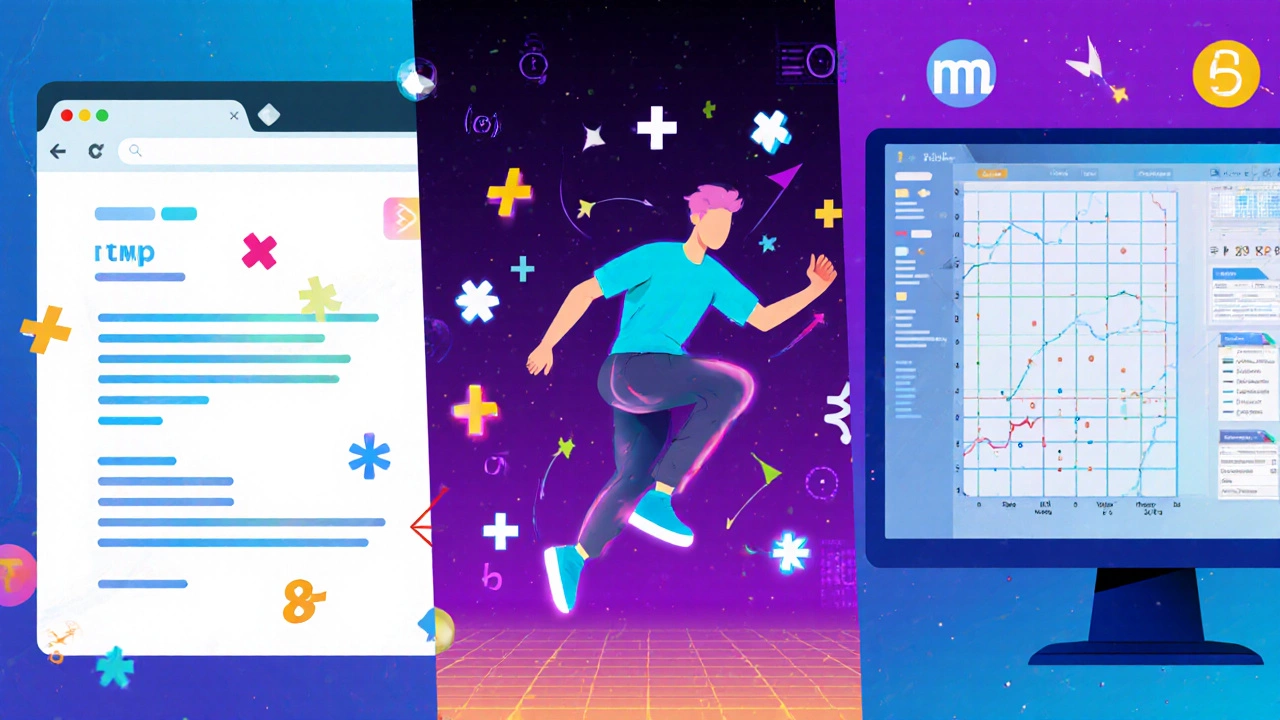Does Coding Require Math? Myths, Facts, and How to Get Started
 Oct, 12 2025
Oct, 12 2025
Coding Math Requirement Calculator
Find Your Math Requirements
Select your programming interest to see what math you'll need, and get recommendations for targeted learning.
Key Takeaways
- Coding can be done with minimal math, but some fields rely on specific concepts.
- Basic arithmetic, logic and problem‑solving are enough for most beginner projects.
- Algorithms, statistics, and geometry become important for data‑heavy or graphics‑intensive work.
- You can learn coding first and pick up math later, using targeted resources.
- Assess your goals, then match the right level of math to the programming domain you want.
Ever heard someone say, “If you can’t do calculus, you’ll never be a programmer”? That line pops up in forums, career talks, and even high‑school guidance sessions. The truth is more nuanced. While Coding is the act of turning ideas into computer instructions using languages like Python, JavaScript, or C++, the math you need depends on what you want to build.
What Does "Coding" Really Involve?
At its core, coding is about expressing logic in a language a computer understands. This means you must be comfortable with:
- Variables and data types - storing numbers, text, or more complex structures.
- Control flow - using
if,for,whileto decide what happens next. - Functions or methods - packaging reusable chunks of logic.
Which Programming Areas Need Math?
Below is a quick snapshot of popular domains and the typical math depth they demand. The table uses a three‑point scale (Low, Medium, High) to help you gauge where you might need extra study.
| Domain | Typical Math Required | Key Examples |
|---|---|---|
| Web Development | Low | HTML/CSS layout, form validation, REST API calls |
| Mobile App Development | Low‑to‑Medium | UI scaling, basic geometry for animations |
| Game Development | Medium‑to‑High | Physics simulation, vector math, trigonometry |
| Data Science & Machine Learning | High | Linear algebra, probability, statistics, optimisation |
| Embedded Systems / IoT | Medium | Signal processing, discrete math, control theory |
| Algorithmic Trading | High | Time‑series analysis, stochastic calculus, matrix operations |

Core Math Concepts That Frequently Show Up
If you’re curious which math topics pop up most often, here’s a concise list. You don’t need a PhD in each, just a functional grasp.
- Algorithms are step‑by‑step procedures that solve problems, often analysed with big‑O notation to understand efficiency. Knowing how to count operations (basic combinatorics) helps you write faster code.
- Data Structures are organized ways to store and retrieve data, such as arrays, linked lists, trees, and graphs. Understanding tree depth or hash collisions leans on simple probability.
- Statistics provides tools for summarising data, measuring variance, and making predictions. It’s the backbone of A/B testing and machine‑learning model evaluation.
- Linear Algebra deals with vectors, matrices, and transformations - essential for graphics, neural networks, and quantum simulations.
- Geometry & Trigonometry help calculate distances, angles, and collisions in 2D/3D space, a daily need for game dev and AR/VR.
- Logic underpins boolean algebra, conditionals, and circuit design - the true foundation of programming.
Can You Code Without a Strong Math Background?
Absolutely. Many successful developers started with zero formal math training. Here’s a practical roadmap:
- Pick a low‑math domain first. Build websites, simple scripts, or automation tools. These projects rely mostly on string manipulation and API calls.
- Lean on visual tools. Drag‑and‑drop builders (e.g., Webflow) let you see the result while you learn basic HTML/CSS concepts.
- Use libraries that hide the heavy lifting. For example,
pandasabstracts statistical formulas;Three.jshandles 3D math behind the scenes. - Practice problem‑solving. Sites like LeetCode or HackerRank grade solutions by logic, not by advanced math.
- Fill gaps only when needed. If a project later demands matrix multiplication, learn that single concept instead of a full linear‑algebra course.
Bridging the Math Gaps: Resources That Care About Your Time
When you hit a math wall, these focused resources can help you climb without getting lost in theory:
- Khan Academy - Linear Algebra Basics. Short videos, interactive quizzes, and real‑world coding examples.
- 3Blue1Brown’s "Essence of Linear Algebra" series. Visual intuition that clicks for programmers.
- Codecademy’s "Math for Data Science" module. Hands‑on Jupyter notebooks that combine Python code with explanations.
- Books: "Mathematics for Computer Science" (Lehman, Leighton, Meyer). A concise, proof‑light text tailored for CS students.
- Practice sites like Project Euler. Problems start easy, then gradually weave in number theory, combinatorics, and modular arithmetic.
Real‑World Examples: How Math Shapes Different Products
Understanding concrete use‑cases helps you decide where to invest effort.
- Web Development: A checkout form that validates credit‑card numbers uses the Luhn algorithm - a simple checksum that only needs modular arithmetic.
- Game Development: Collision detection between moving objects relies on vector dot products and distance formulas (Pythagoras).
- Data Science: Building a recommendation engine involves matrix factorisation, a direct application of linear algebra.
- Machine Learning: Gradient descent optimisation solves equations by iteratively adjusting weights - rooted in calculus, but most frameworks hide the derivatives.
Quick Self‑Assessment Checklist
Before you dive into a new project, run through this checklist. Mark the items you already feel comfortable with; the rest point you toward targeted learning.
- Can I perform basic arithmetic and manipulate numbers in code?
- Do I understand boolean logic and how
if/elsestatements work? - Am I comfortable with loops and simple array operations?
- Do I know what a variable’s data type means (integer, float, string)?
- Do I need to work with graphics, physics, or large datasets?
- Have I identified a specific math concept (e.g., vectors, probability) that appears in my project’s requirements?
Bottom Line: The coding math requirement Isn’t One‑Size‑Fits‑All
Whether you want to build a personal blog or train a neural network, the math you need scales with the problem’s complexity. Start small, use libraries that abstract the heavy math, and grow your mathematical toolkit only when the project demands it. This approach keeps learning fast, prevents burnout, and lets you focus on the creative part of coding - turning ideas into reality.
Frequently Asked Questions
Do I need to be good at calculus to become a software engineer?
Most day‑to‑day engineering tasks rely on algebra, logic, and basic geometry. Calculus becomes useful in fields like graphics rendering, scientific computing, or advanced machine learning, but it isn’t a prerequisite for entry‑level positions.
Can I learn Python without any math background?
Yes. Python’s syntax is beginner‑friendly, and you can start by writing scripts that manipulate text, files, or web APIs. When you later need statistics or linear algebra, you can pick up those specific topics without re‑learning the language.
Which programming language requires the most math?
Languages used for scientific computing - such as MATLAB, Julia, or R - often involve heavy math because they’re built for numerical analysis. However, the language itself isn’t the driver; the domain (e.g., data science) dictates the math intensity.
How much linear algebra do I need for machine learning?
Understanding vectors, matrix multiplication, and eigenvalues covers the majority of beginner‑level models (linear regression, logistic regression, simple neural nets). Advanced deep learning often uses the same operations, but libraries like TensorFlow handle the details for you.
What’s a good first project if I’m weak in math?
Create a personal website or a simple task‑automation script (e.g., batch‑rename files). Both require minimal math and let you practice core coding concepts like control flow, functions, and API calls.